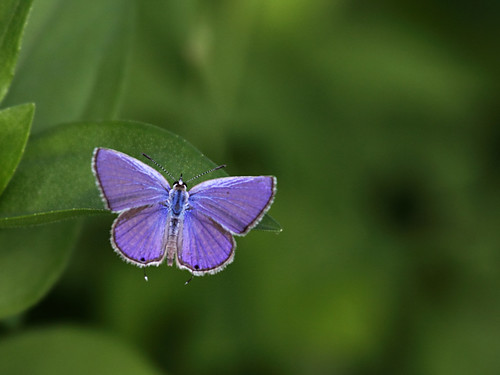
One of the first question that the beginners of butterfly watching ask is “Why are the ‘The Blues’ group of butterflies called as such?”
The question is not invalid because the common butterflies of this group are not only relatively small and when they do sit at one place they do not appear to be blue at all. The Plains cupid (Chilades pandava) with a wing span of about 25mm is a commonly seen example of a blue butterfly.

The answer lies in seeing the upper side of the wings of male Plains Cupid and that too in the wet season form. It is a beautiful Lavender blue. The female or the dry season form of the male is dull brown and thus escapes attention. I have observed that the smaller blues like to sun themselves a bit with open wings during the mornings in the rainy season and that is the best time to photograph them.
In other trivia – The blues is a sub-family of the Lycaenidae. The Lycaenidae are the second-largest family of butterflies, with about 6000 species worldwide, whose members are also called gossamer-winged butterflies. They constitute about 40% of the known butterfly species. Source: https://en.wikipedia.org/wiki/Lycaenidae
More information on Plains Cupid https://en.wikipedia.org/wiki/Plains_Cupid